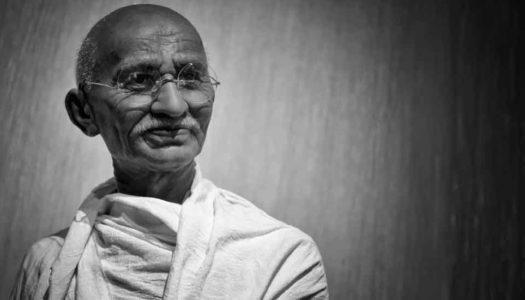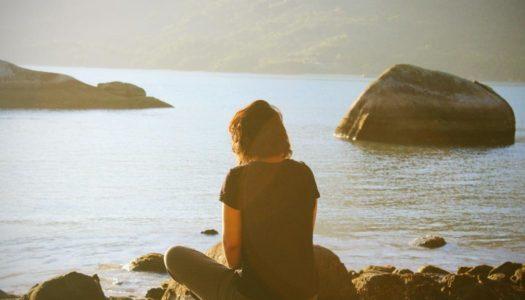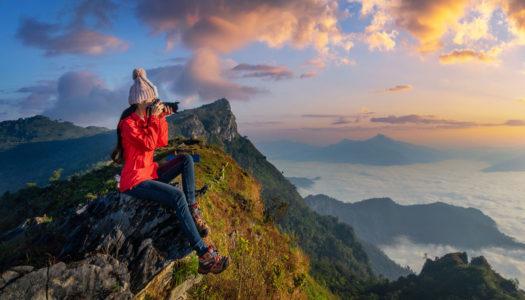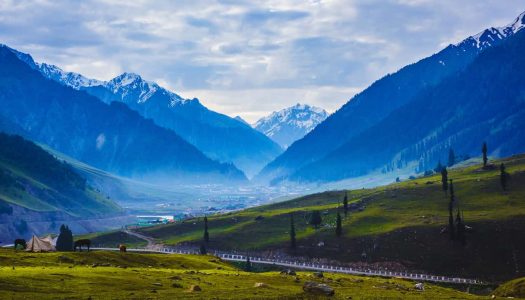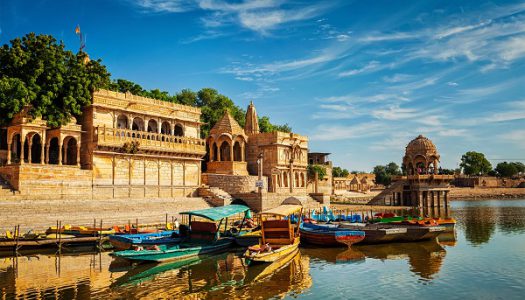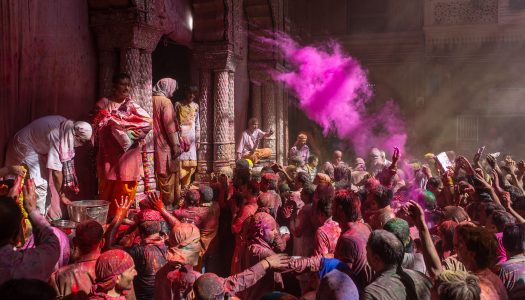Dance is considered an integral part of Indian culture and history, which has brought people together under one roof. Did you know that Indian dance forms are known for their rich cultural legacy? Dancers gracefully express emotions and desires through Indian dance forms. These dances are divided into classical and folk, wherein you can witness a blend of art, music and moves!
Indian dance forms capture your attention by creating an emotion through spirituality and its deep-rooted history. You can come across many dance forms belonging to specific communities. With a plethora of Indian dance forms, check out significant ones seen across the country.
15 Energetic Indian Dance Forms Showcasing Rich Culture
1. Bharatanatyam
Bharatanatyam is one of the best out of the 8 classical dances of India that trace back to the era of Natya Shastra. Interestingly, it is a preeminent Indian classical dance form considered the mother of all the other dances of India. The dancers narrate stories through different mudras or hand gestures and rhythm.
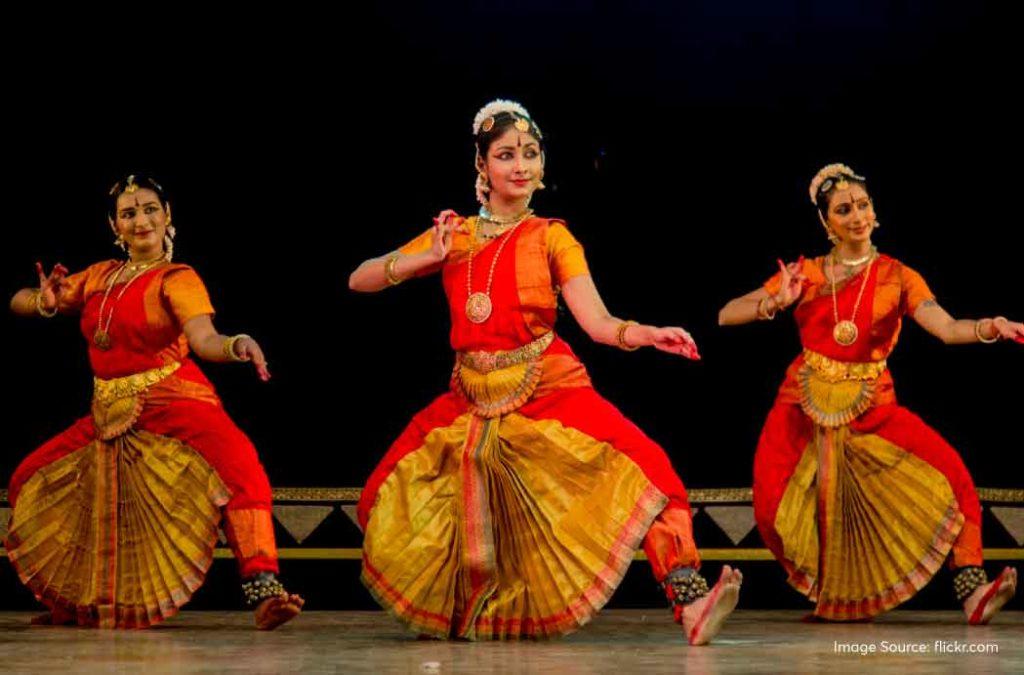
You can literally notice a sudden shift from fast footwork to slow musical moves without losing its true essence of mythological stories! It originated in Tamil Nadu and is usually performed in temples as a temple dance known as Sadhir. It was performed as a devotional offering.
It is believed that devotees communicated with the divine through hand gestures and expressions. Have you wondered how each action in Bharatanatyam Indian classical dance is like a sculpture coming to life? Every little step feels like a dialogue helping you captivate the art form.
2. Kathak
Witness another significant classical Indian dance form called Kathak! It is considered an elegant art of storytelling that originated in Varanasi. It was used by the wandering storytellers to narrate mythological scenes. It is accepted as a significant mode of communicating epic stories of Hindu mythology through footwork, hand gestures, spins and facial expressions.
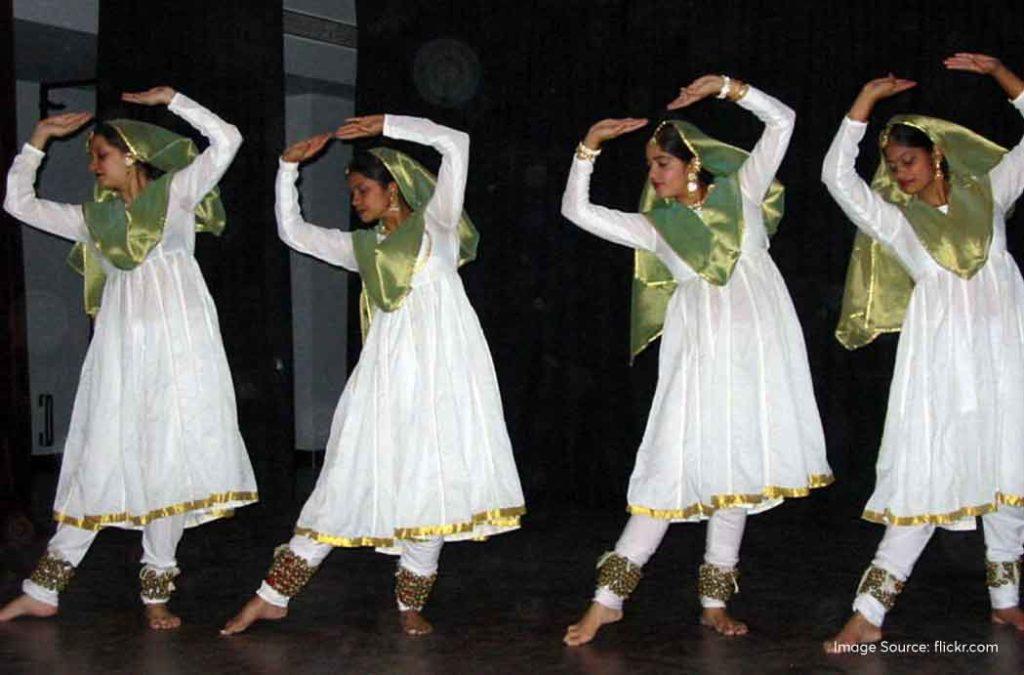
What’s more? Kathak performances were highly regarded in the royal courts. Since footwork is one of the distinctive features of Kathak, the dancers wear ankle bells (ghungroo) to give effect to the rhythmic beat.
Men and women performing Kathak usually wear vivid and bright-coloured clothing. Kathak performances are known for their proper sequencing, which comprises Nritta (dance), Natya (storytelling) and Nritya (facial expressions).
3. Kathakali
Kathakali is one of the beautiful Indian dance forms that speaks through expressive eyes and movements! It embodies the essence of storytelling and mythology. The dance portrays the endless fights between good and evil.
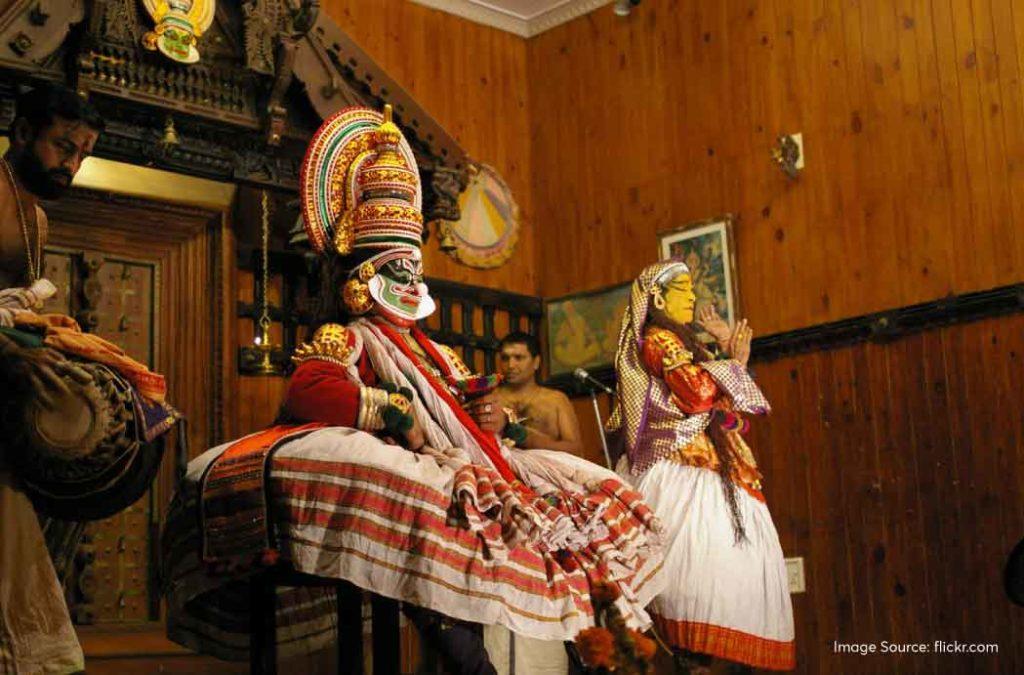
Did you know that Kathakali originated as a folk art in Kerala? Yes, it gained popularity during the 16th and 17th centuries, depicting significant tales of Hindu deities. This classical dance form of India has a unique style with intricate makeup that helps to convey emotions.
It also has a specific meaning, representing a particular character. Facial expressions play a crucial role in this Indian dance form! The exaggerated features, including large eyes and sharp eyebrows, contribute towards the upliftment of character.
4. Kuchipudi
The name of the dance form Kuchipudi itself is unique as it is named after a village in the Krishna district of Andhra Pradesh. It is one of the 8 Indian classical dance forms. It is a dance-drama performance based on the Hindu Sanskrit text, Natya Shastra.

Kuchipudi receives great appreciation not just in India but also internationally. It is a prominent art combining rhythmic expressions and makeup, thereby making it one of the graceful Indian dance forms. Earlier, it was confined only to men.
However, it was later transformed into a classical dance as more women dancers showcased their interest. It is one of the best Indian dance forms that creates a balance between the smooth and energetic aspects. Bright-coloured costumes and ornaments are used to enhance beauty.
5. Manipuri
Manipuri is one of the ancient classical Indian dance forms. It mainly portrays the divine love stories of Lord Krishna and Goddess Radha. It emphasises the spiritual connection and is performed in temples, especially during religious festivals.
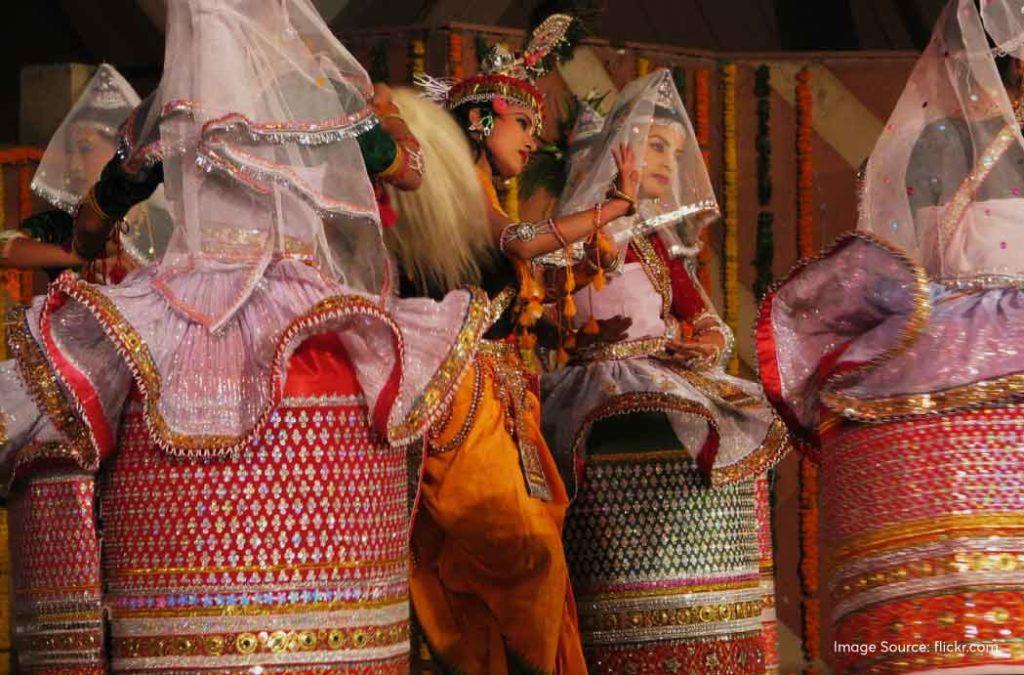
Unlike the other Indian dance forms, Manipuri represents the culture of the destination. It has its distinctive features, including gentle and rounded movements focussing on delicate steps using the lower body.
Being a religious art, it aims to express spiritual values and act as a mirror for social significance. Its vibrant and traditional costumes reflect the cultural heritage of the region, incorporating the rhythmic Manipuri music.
6. Mohiniyattam
How do you feel when a gentle breeze passes by you? That’s the essence and beauty of Mohiniyattam. The classical Indian dance form has its origins in Kerala. It is one of the Indian dance forms known for its elegance, characterised by soft and gentle moves.
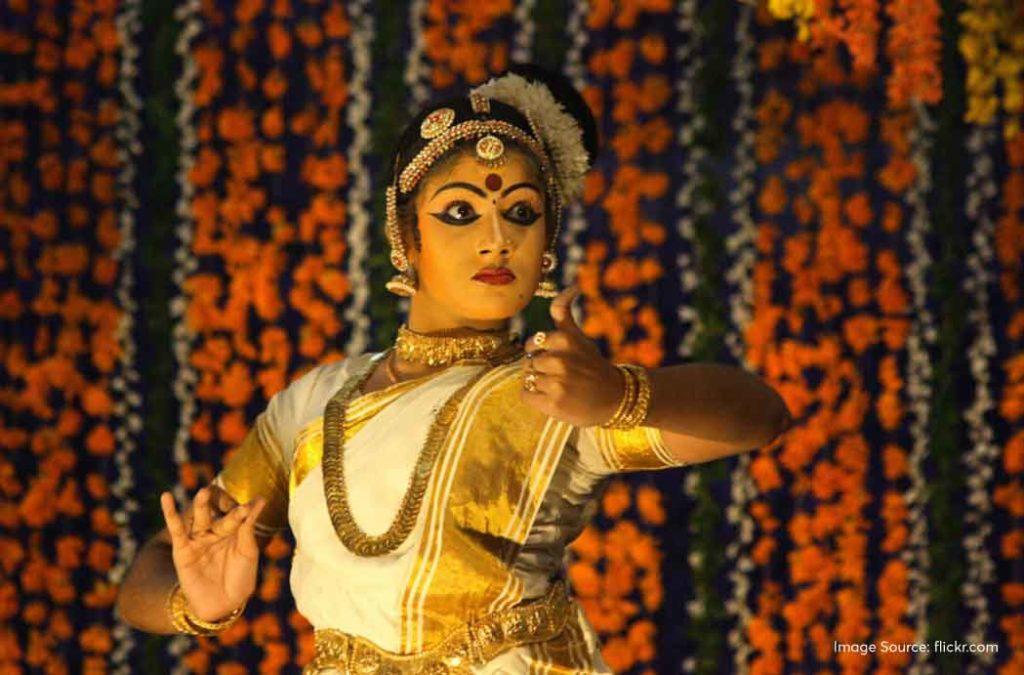
Since it is a dance form from Kerala, the white saree with gold borders is worn by the dancers, contributing to the overall heritage of the dance. You can also notice a unique style in the way their hair is tied with jasmine flowers, giving it a lively appearance.
What makes Mohiniyattam even more distinct is its use of feminine expressions to narrate stories of love and devotion. It is sure to capture your soul through its blissful music and transitions.
7. Odissi
Can you imagine dancers creating magnificent patterns with their bodies along with significant glides and expressions? This is exactly what you can see in this Indian dance form. Odissi is one of the oldest Indian dance forms originating from Odisha.
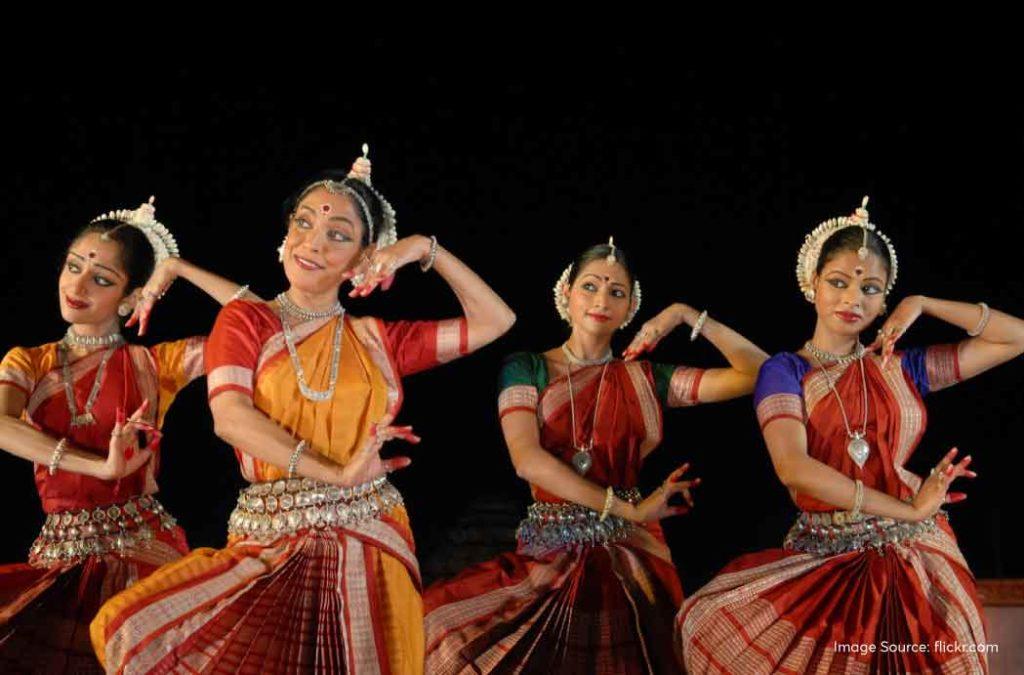
It is featured for its circular movements and artistic expression. What makes Odissi dance form distinct is its intense connection with the temple sculptures and narratives. The Odissi dancers perform in sambalpuri sarees known for their stunning embroidery.
Melodious Odissi ragas music is used for the performance. They generally perform at the temples in Odisha during festivities. As you watch an Odissi dance, you feel like immersing yourself in every minute expression. After all, every little step has a story to tell!
8. Sattriya
Have you heard about the Sattriya dance, which has its origins in Assam? It is one of the 8 Indian classical dance forms dating back to the 15th century. This Indian dance form was performed as part of the daily religious rituals only by male monks in monasteries.
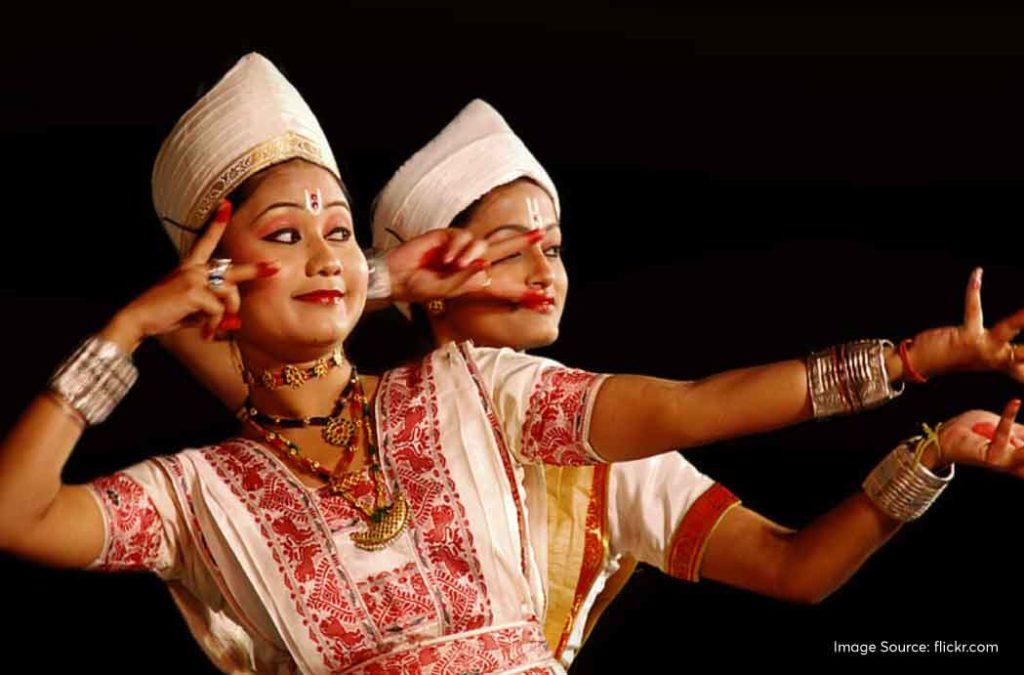
It was considered a ritualistic art form that marked the beginning of special festivals. Sattriya is a 600-year-old Indian dance form seen among the sattras, who are known for their discipline and devotion. Perform with high commitment; you can see a balance of simplicity and elegance.
The performance makes you feel like dancers carving shapes in the air. Since it goes beyond entertainment and fun, there is a divine connection between every dancer and viewer.
9. Chhau
Imagine dancers expressing their emotions when their faces are hidden behind a mask. Chhau is one of the traditional Indian dance forms originating from Eastern India. One of the unique features of this dance form is the use of masks!
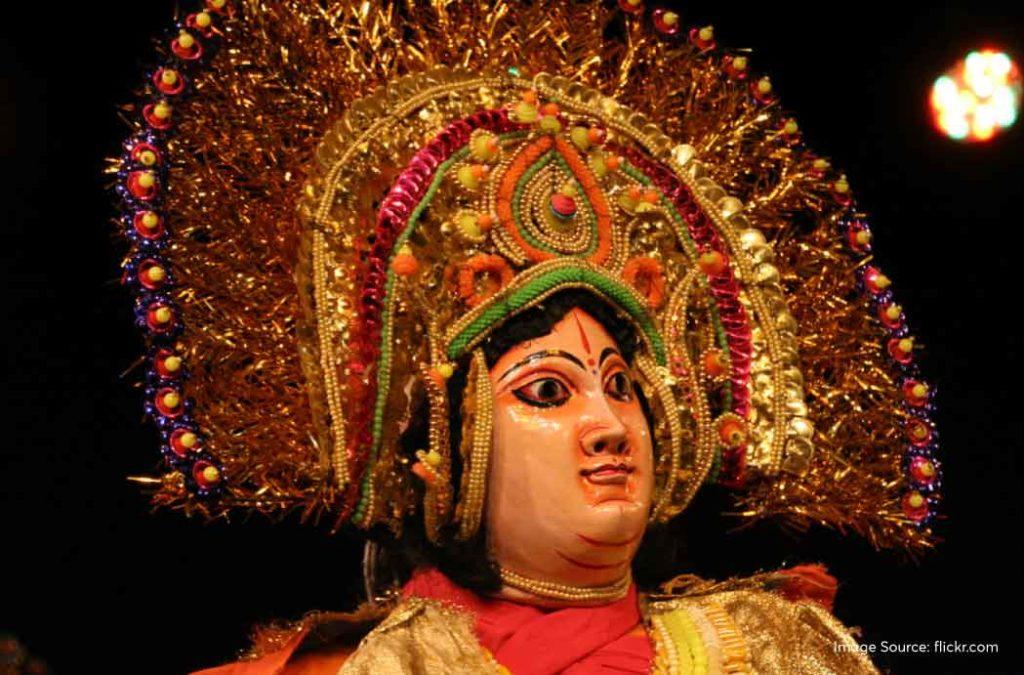
If you have seen the dynamic movements of Chhau dance, you would know how martial arts and dance can be combined! Chhau is renowned in West Bengal, Odisha and Jharkhand. The characters depicted in this art form are mainly from the Ramayana and Mahabharata.
Moreover, the performance is mainly focused on body language, footwork and unique gestures. If you are someone who likes performances with a lot of physical strength and energy, this one’s for you!
10. Garba
The feeling of dancing in unison where steps are based on the rhythm of drums is surely mesmerising! Garba is one of the vibrant folk dances renowned in Gujarat. It is known for its rhythmic beats and movements with fun and unity.
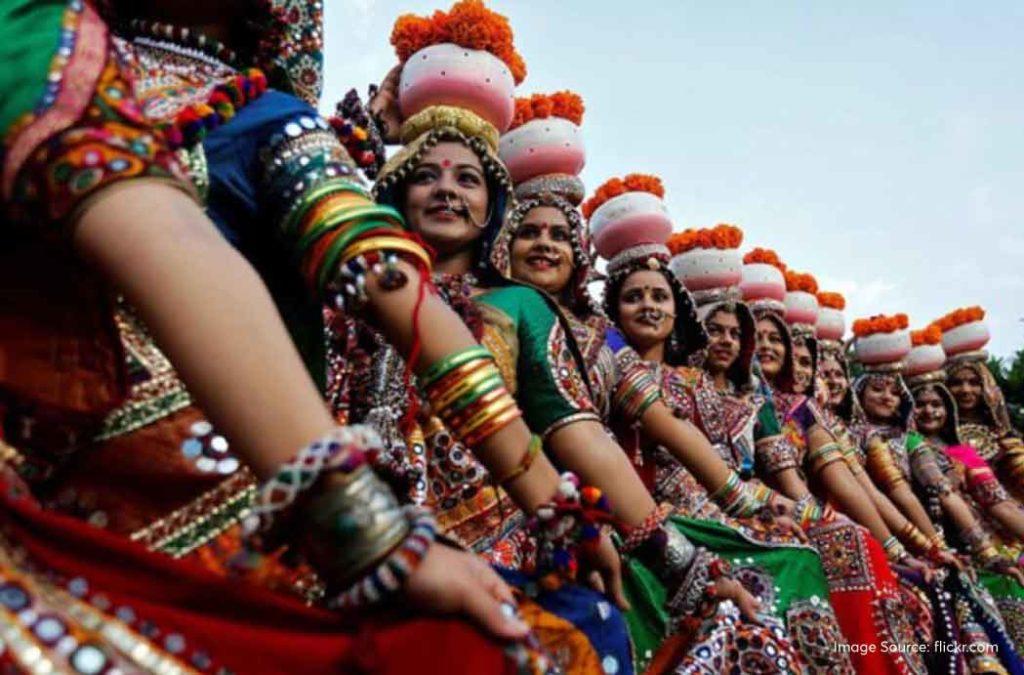
It is specifically performed during the Navratri festival, with a lot of dancers dancing in circular formations. You can sense a connection with the divine as dancers circle around the deity, signifying their love and devotion.
Doesn’t it sound like a fun dance where there is a celebration of togetherness in the divine presence? Unlike other Indian dance forms, there is no structure or beginning or end for this!
11. Lavani
A dance performance with high-energy moves and expressive narration is what Lavani is all about. It combines dramatic expressions with fast movements, making it hard to look away.
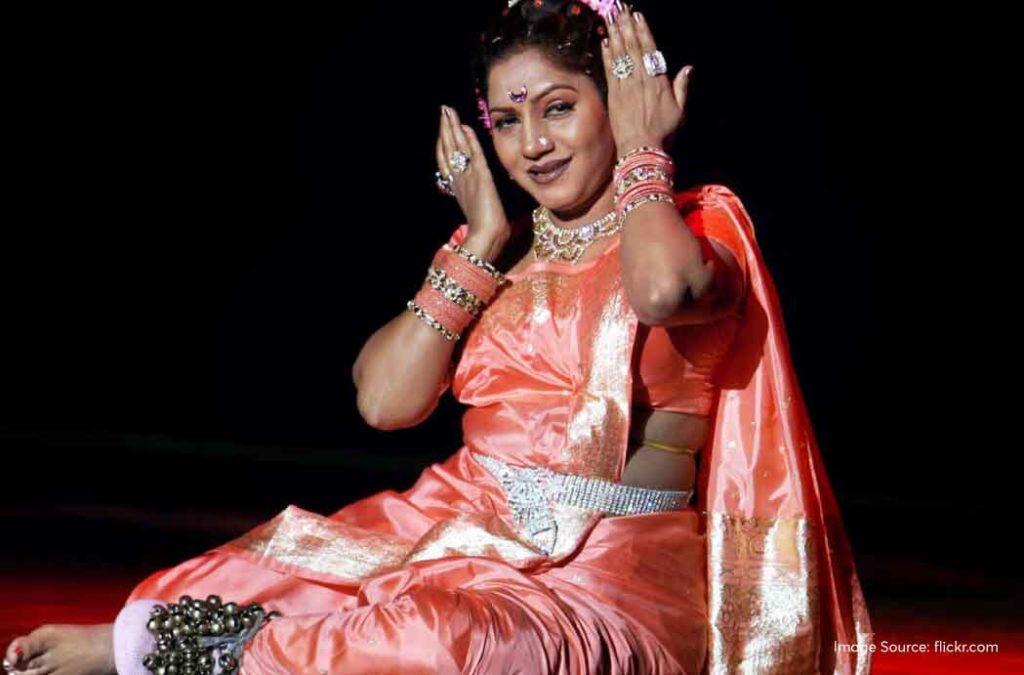
Lavani is one of the traditional Indian dance forms of Maharashtra. It blends lively rhythm with strong narrative, contributing towards the thought of bringing stories to life. You would definitely feel like joining the performance due to its infectious energy and overall charm.
The unique dance movements in Lavani make it a celebration of the culture of Maharashtra, where different themes of love and passion are portrayed.
12. Yakshagana
Imagine grand figures moving in sync with powerful beats and dialogues. Yakshagana is a traditional dance form that has its origins in Karnataka. It is a soothing blend of music, dance and storytelling.
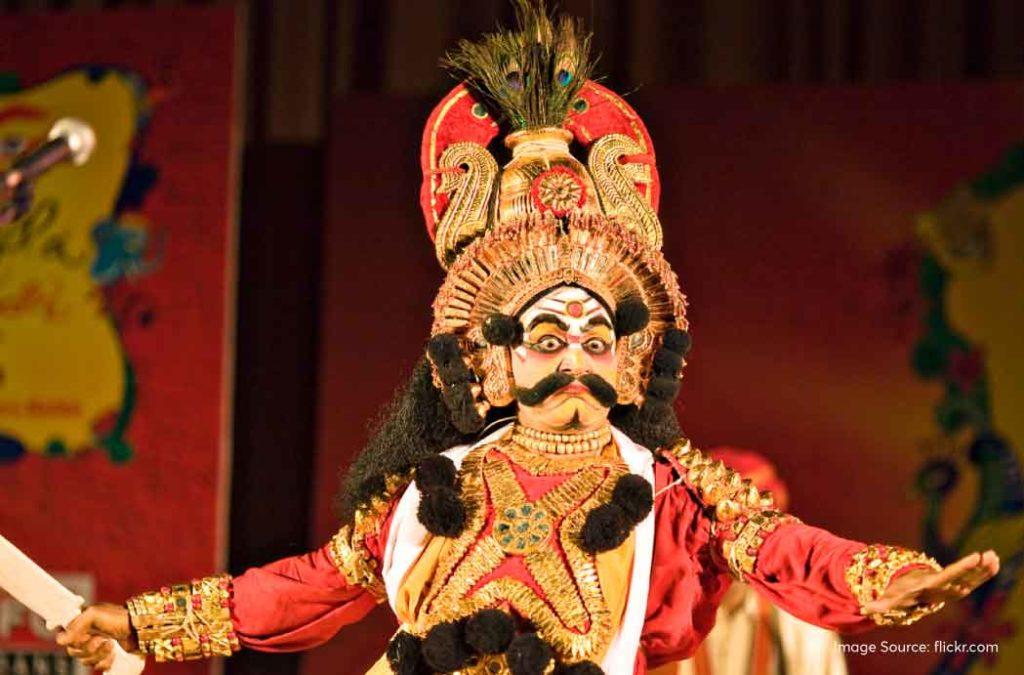
The performers wear bright-coloured costumes with specific detailing. This is done to make sure audiences capture the emotions and expressions.
Doesn’t it sound like a fusion of entertainment and storytelling focussing on the culture and tradition of that particular area? These performances usually happen through the night as you get enthralled into it once you start watching it.
13. Tandava
Have you heard about the powerful tandava, which is considered to be the dance of Lord Shiva? As the name suggests, it is a dance that represents the rhythm of the universe along with the creation and destruction of the same.
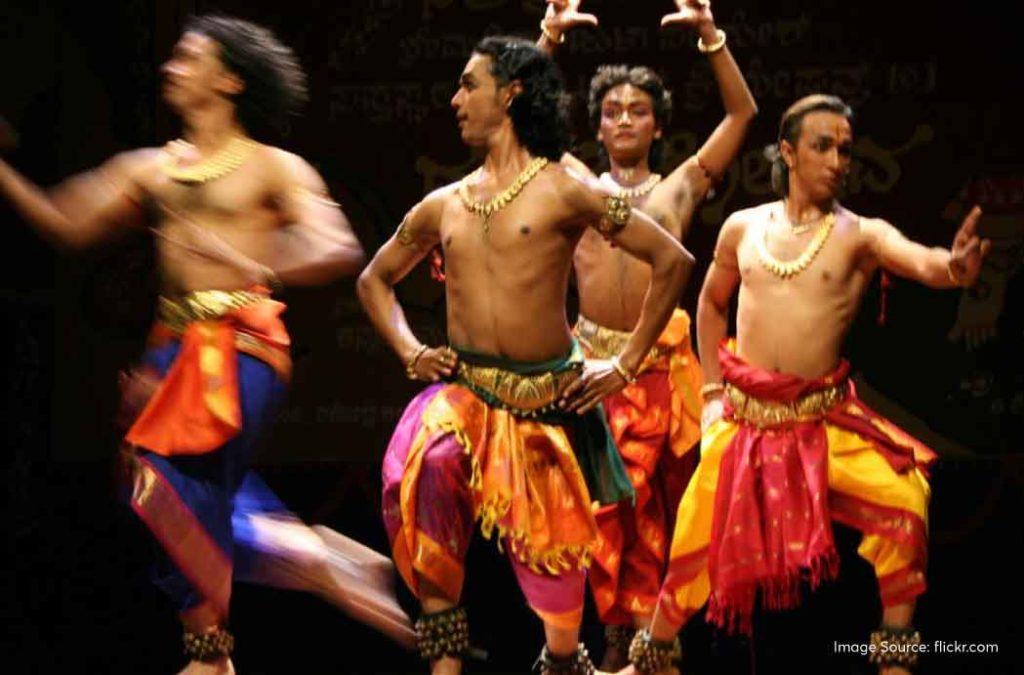
The Indian dance form is characterised by strong and vigorous movements. It features bold expressions and footwork. It is certainly difficult for you to imagine the intensity of the same until you witness it!
The main focus of this dance form is on strength, rhythm and power. It is specially designed to create awareness of universal energy. You can see Tandava at religious festivals or social performances.
14. Ghoomar
Alongwith historical as well as haunted places in Rajasthan, the state is also popular for the Ghoomar dance. The folk dance is all about the graceful twirling of the dancers. It captivates you in the beauty and mystique of every move.
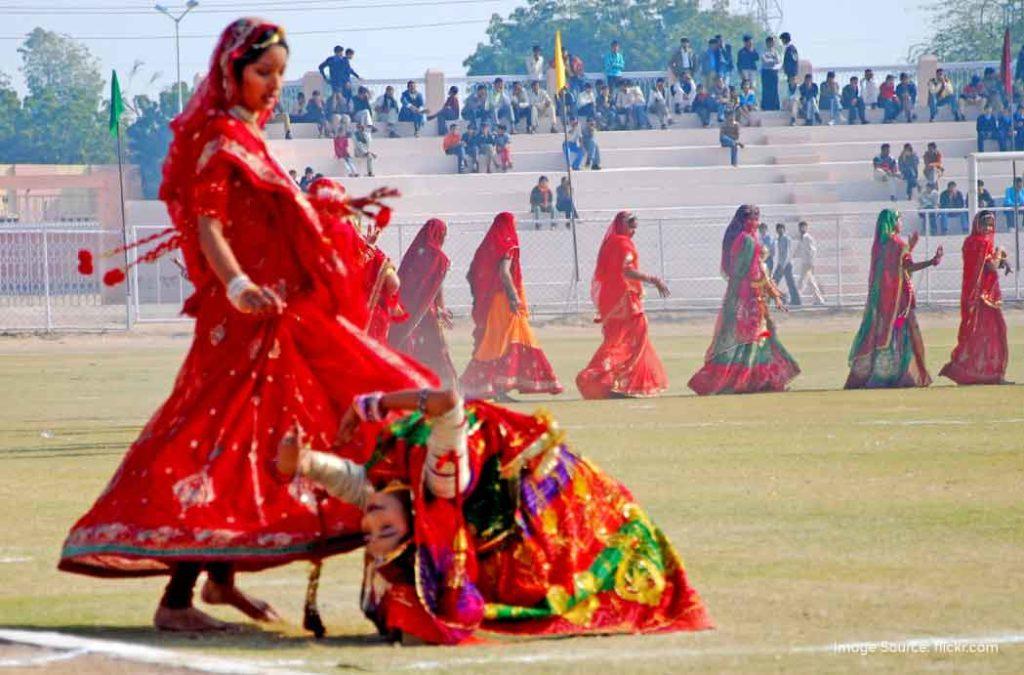
The costumes used for such performances are purely traditional. It creates a visual spectacle through its mixed grace, rhythm and motions. The dance is often performed during special occasions, festivals and weddings.
What’s more? It is accompanied by traditional Rajasthani music, adding a touch of cultural heritage. Ghoomar has received international recognition as it is also performed at the Rajasthan International Folk Festival thereby grabbing eyeballs.
15. Bihu
While Guwahati tourist places grab your attention, there’s something more to Assam! Yes, it is the traditional Bihu dance that is performed during the time of the Assamese New Year. It is a vibrant celebration with regard to good agricultural produce.
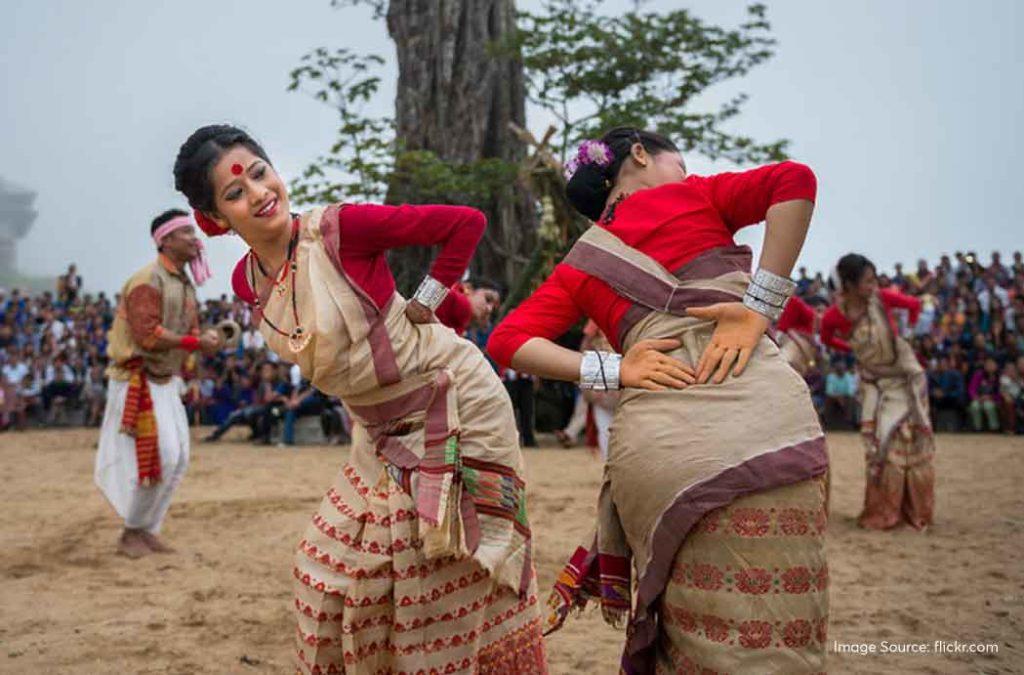
Bihu also celebrates the essence of fertility with its erotic movies. You get to witness a lively atmosphere as dancers move with energetic steps and playful expressions. It literally reflects the excitement of the season.
What makes Bihu stand out is its quick footwork, rhythmic hand movements and lively hip swings. The infectious energy created through the dance is enough to attract many tourists.
Indian Dance Forms: Relevance in today’s time
Beyond the beauty and grace of their movements, classical dance forms of India have a language and identity of their own. Even though dances continue to evolve, they have an in-depth connection to their ancient roots. They depict a strong need to preserve Indian traditions at all times.
Indian dance forms are no longer restricted to a particular state or region. You can now witness its spread on national television with many shows dedicated to artistic dances. The advent of social media also plays a key role in promoting the dances in the form of short videos, stories and posts. The younger generation is moving towards a knowledgeable era where they not only watch dances but are keen to discover their history.
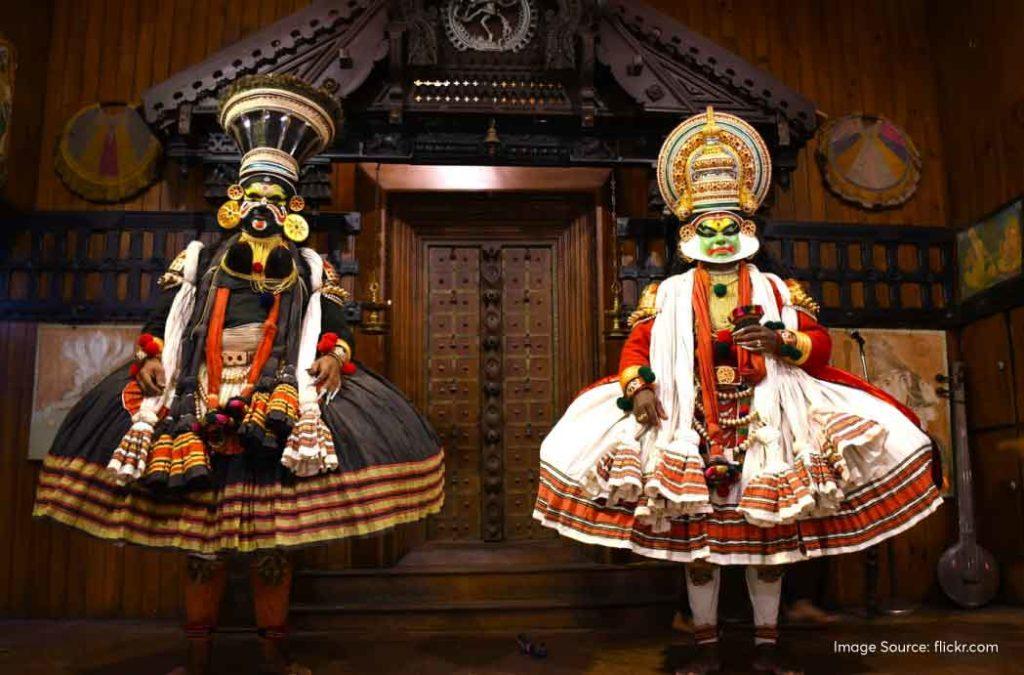
What’s more? During festivals of Durga Puja or Onam, you can notice corporate companies organising competitions. They involve dressing, dancing and singing folk music. Such strategic moves promote diversity and help individuals learn about the Indian dance forms. Even schools now promote these dances by incorporating them in annual day functions, teacher’s day celebrations or New Year parties.
Indian dance forms find a place in the hearts and heads of individuals due to the spread of cultural essence. It is right to say that Indian dance forms are not about the past alone. The art is constantly evolving to capture the present elements for an inspiring heritage for the future.
Your Ticket to Magical Moves!
Do you realise how incredible it is to have these Indian dance forms exhibiting the cultural heritage and tradition of India? The elegant transitions and expressions seen in Indian dance forms are not just about entertainment. It is the depiction of the country’s history and age-old stories.
As you travel through the various branches of Indian dance forms, it is difficult not to feel an immense appreciation for them! Indian dance forms carry the legacy of centuries incorporating culture, traditions and spirituality.
















